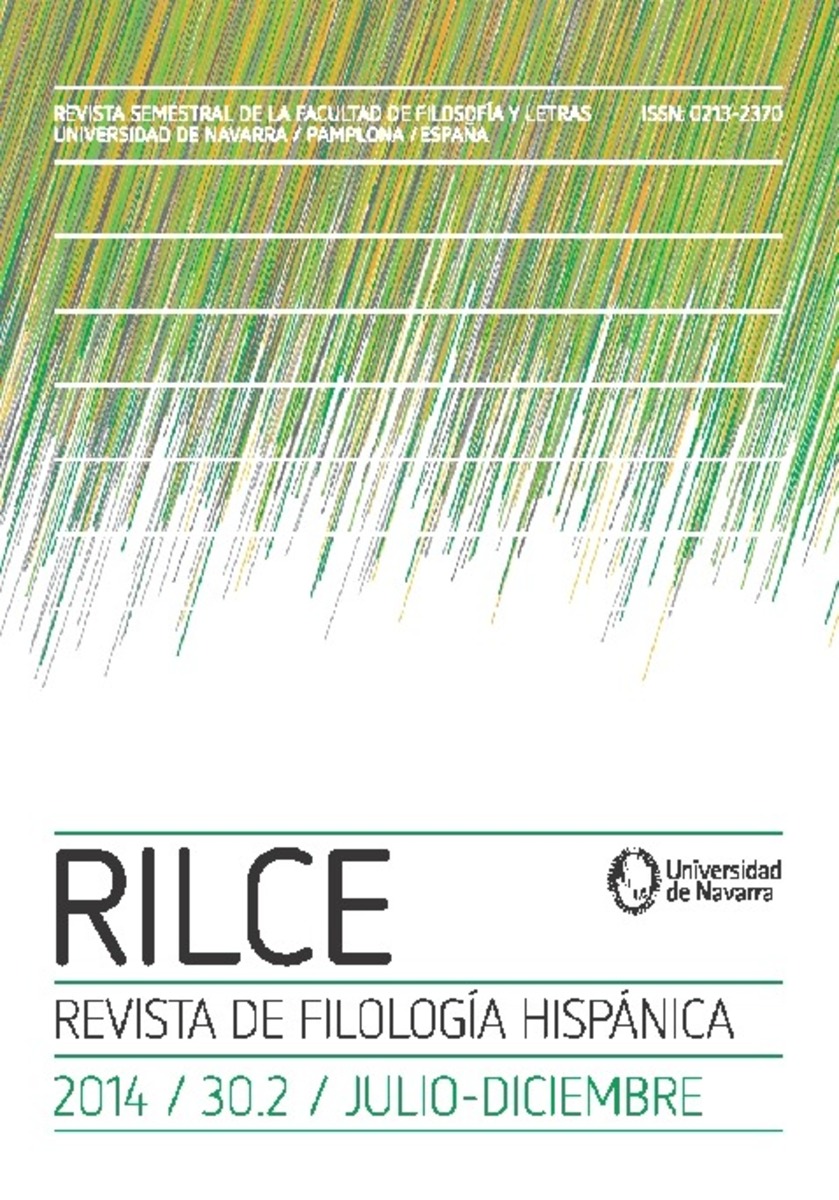Full metadata record
| DC Field | Value | Language |
|---|---|---|
| dc.creator | Setton, R. (Román) | - |
| dc.date.accessioned | 2015-03-16T11:43:51Z | - |
| dc.date.available | 2015-03-16T11:43:51Z | - |
| dc.date.issued | 2014 | - |
| dc.identifier.citation | Setton, R. (2014). ""Nelly, la tercera narración policial de Eduardo L. Holmberg"", Rilce, vol. 30, n.2, pp. 580-594. | es_ES |
| dc.identifier.issn | 0213-2370 | - |
| dc.identifier.uri | https://hdl.handle.net/10171/37863 | - |
| dc.description.abstract | Holmberg es –junto con Waleis– el autor argentino más importante de narraciones policiales del siglo XIX. De sus cinco ficciones policiales, las dos primeras, La bolsa de huesos (1896) y La casa endiablada (1896), han recibido atención de la crítica con frecuencia; solo dos textos recientes abor- dan las dos últimas (“Don José de la Pamplina”, 1905; “Más allá de la autopsia”, 1906). En este trabajo indagamos acerca de Nelly (1896), su tercera novela corta policial, nunca abordada en relación con el género. Intentamos demostrar que sus tres primeros policiales conforman una trilogía y permiten advertir en conjunto las oscilaciones de Holm- berg en su primera aproximación al policial. En Nelly –sostenemos– aparecen elementos propios de la Kriminalnovelle y un distanciamiento perceptible respecto de la ley de Estado y el consonante modelo de la cultura científica. Las tres novelas cortas pueden ser caracterizadas como narraciones policiales fantásticas y promueven un modelo de cultura y de nación que incorpora al extranjero y contrasta con el del naturalismo argentino contemporáneo. | es_ES |
| dc.description.abstract | Holmberg is –along with Waleis– the most important Argentine author of detective fiction of the nineteenth century. Critics have noticed quite enough his first two detective stories, La bolsa de huesos (1896) and La casa endiablada (1896), of the five that make up the whole; only two recent ar- ticles analyze his last two detective stories (“Don José de la Pamplina”, 1905; “Más allá de la autop- sia”, 1906). In this paper I investigate Nelly (1896), his third detective story, never analyzed in relation to this genre. I try to demonstrate that these three first narrations form a trilogy and they jointly allow us to notice Holmberg’s fluctuations on his first approach to detective fiction. I hold the view that it is possible to note in Nelly elements of the Kriminalnovelle and a perceptible distance from the state law and the related paradigm of scientific culture. All three stories can be characterized as fantastic detective novels, and they promote a model of culture and nation that incorporates the foreigner and contrasts with the texts of contemporary Argentine naturalism. | es_ES |
| dc.language.iso | spa | es_ES |
| dc.publisher | Servicio de Publicaciones de la Universidad de Navarra | es_ES |
| dc.rights | info:eu-repo/semantics/openAccess | es_ES |
| dc.subject | Materias Investigacion::Filología y Literatura | es_ES |
| dc.subject | Género policial | es_ES |
| dc.subject | Cultura científica | es_ES |
| dc.subject | Literatura fantástica | es_ES |
| dc.subject | Kriminalnovelle | es_ES |
| dc.subject | Naturalismo | es_ES |
| dc.subject | Detective fiction | es_ES |
| dc.subject | Scientific culture | es_ES |
| dc.subject | Fantastic literature | es_ES |
| dc.subject | Naturalism | es_ES |
| dc.title | Nelly, la tercera narración policial de Eduardo L. Holmberg | es_ES |
| dc.title.alternative | Nelly, Eduardo L. Holmberg’s third detective story | es_ES |
| dc.type | info:eu-repo/semantics/article | es_ES |
| dc.relation.publisherversion | https://revistas.unav.edu/index.php/rilce/index | es_ES |
| dc.identifier.doi | 10.15581/008.30.235 | es_ES |
Files in This Item:
Statistics and impact
Items in Dadun are protected by copyright, with all rights reserved, unless otherwise indicated.






